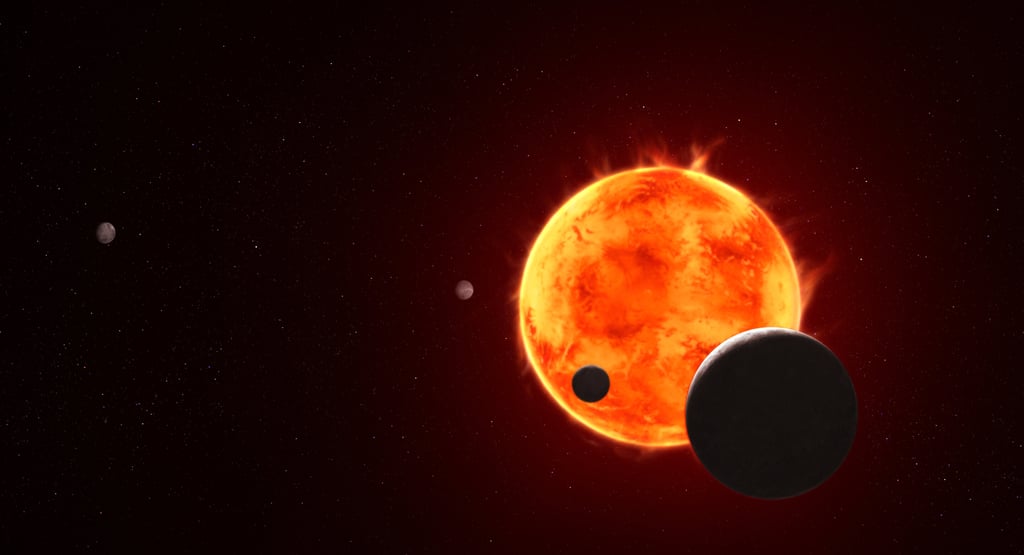TRAPPIST-1e
James Webb sharpens the search for life on TRAPPIST-1e, ruling out thick skies but facing stellar noise.
Geoff Jenkins
9/30/20251 min read


We point the James Webb Space Telescope toward the TRAPPIST-1e system because we can’t shake the question: does another "Earth" exist out there? The latest data doesn’t provide a yes or no, but it does carve away some of the possibilities. Thick, hydrogen-heavy envelopes seem to be ruled out. A Venus-style runaway greenhouse seems unlikely. So what’s left on the table is thinner, secondary atmospheres, the kinds that could actually sustain some level of atmospheric equilibrium, and maybe even life.
But there’s a slight twist. The same star we’re watching this planet orbit is also making the search messy. Stellar “contamination,” or dark spots and bright flares on the red dwarf itself, bleeds into a lot of our measurements. So while every data point offers a possibility of learning something new, it also brings challenges for sorting noise vs real physics.
That’s the beauty of it: even when we don’t get an answer, we’re sharpening the question. TRAPPIST-1e reminds us that discovery isn’t about instant certainty. Rather, it’s about distinguishing between signal and noise, and carrying the question forward with more precision than before.
